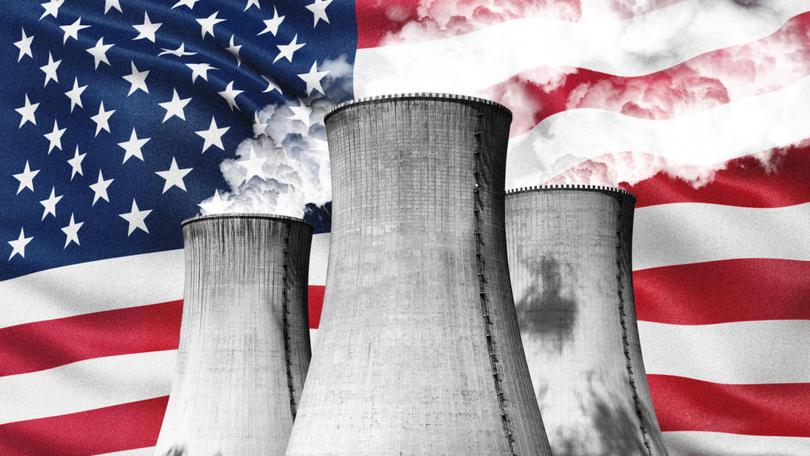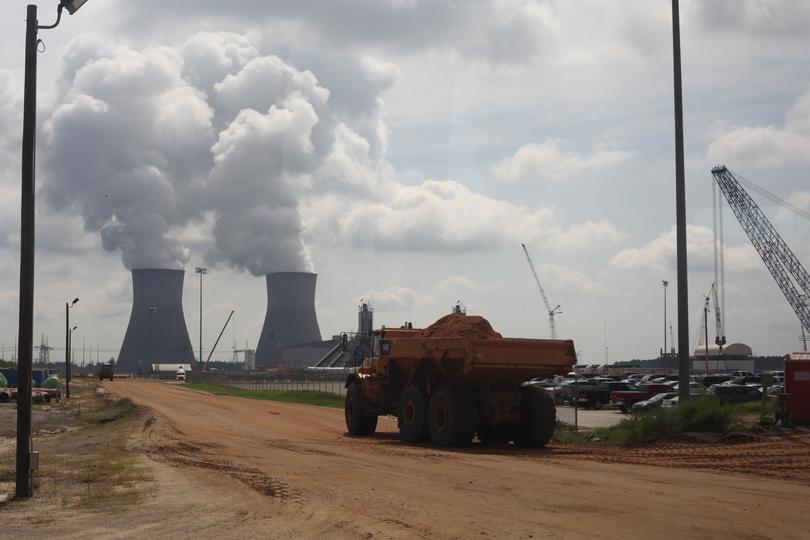THE WASHINGTON POST: The stage is being set for an American nuclear power revolution

US lawmakers took historic action on clean energy last week and hardly anyone seems to have noticed.
US Congress passed a bill to help reinvigorate the anaemic US nuclear industry, with the support of President Joe Biden and 88 senators. Not a single Republican voted against it.
The bill, known as the Advance Act, is precisely the kind of move the Government should be taking to fight climate change. It shows that large bipartisan majorities can help protect the planet without giving in to the endless politicking that has killed so many energy reforms in the past.
Sign up to The Nightly's newsletters.
Get the first look at the digital newspaper, curated daily stories and breaking headlines delivered to your inbox.
By continuing you agree to our Terms and Privacy Policy.The act’s purpose is to liberate the nuclear industry from its decades-long malaise. Though the United States produces more nuclear energy than any other country, it has lately been shedding reactors like crazy.
This is because most US nuclear plants are near or past their retirement age. Today, the average commercial reactor in the United States is 42 years old, which is concerning given that their licences typically last just 40 years (though they can be extended).
Meanwhile, efforts to build new reactors have floundered. Earlier this year, developers fired up a new reactor at Plant Vogtle near Augusta, Georgia, but it was the first one built from scratch in more than three decades. And it suffered years of delays and ever-increasing costs, an all-too-common affliction in the industry.
Given such slow progress toward replacing aging infrastructure, the Energy Department has warned the nuclear industry will keep shrinking. By 2040, the country is projected to produce 20 per cent less energy from nuclear power than it does today.
This is alarming because nuclear is our largest source of non-carbon-based energy. Renewable energy sources such as wind and solar are rapidly expanding, but they are intended to replace fossil fuels. They can’t also be expected to shore up the nuclear industry. And don’t forget, in the next few decades, demand for electricity will only grow.
Meanwhile, the United States is falling behind internationally on nuclear power development. Now that the Vogtle reactor is finished, the number of other projects under construction in the United States is, well, zero.
The Biden White House has long recognised the problem and has been trying to inject some adrenaline into the US nuclear industry. The Inflation Reduction Act dedicates billions to developing new plants and keeping existing ones running. The administration has also dangled hundreds of millions of dollars for any companies that develop advanced nuclear technology, which promises to be cheaper and safer — and to produce less radioactive waste. Critically, the Energy Department has been working to supercharge the production of the enriched uranium needed to fuel advanced reactors.
Now, the Advance Act addresses a key hurdle to nuclear projects: the Nuclear Regulatory Commission’s arduous permitting process.
The soon-to-be law will enlarge the NRC’s chronically inadequate workforce. It also endeavours to simplify the agency’s permitting process. For example, it will lower the burdensome fees that companies must pay in the review process, helping relatively small, innovative companies enter the market.
It will also direct the NRC to more quickly license nuclear plants at retired fossil fuel sites. This is just common sense. Retrofitting a former coal-fired power plant, which is already hooked up to the electrical grid, could save on construction costs and avoid lengthy siting reviews. It could also return jobs to communities that have lost them.
A 2022 Energy Department study identified more than 300 retired or operating fossil fuel sites that could be converted to nuclear.
Here’s another smart change: The law will speed up the approval process for reactor designs that the agency has already reviewed. This addresses one reason the industry has struggled to build new reactors: the tendency of developers to try to reinvent the wheel, and thus raise costs.
There’s more good stuff in the bill, such as investing in the workforce that will operate new nuclear plants and revising regulations to make it easier for the United States to export its technology to allies.
Still, none of these provisions can guarantee an American renaissance in nuclear energy. So much depends upon advanced nuclear technology becoming commercially viable. So far, attempts to build such technology in the United States have flopped. Late last year, the most promising project, the NuScale advanced reactor in Idaho, was cancelled due to surging costs.
This prompted nuclear power opponents to proclaim advanced nuclear energy a dead end.

This is defeatism. Advanced nuclear technology is not theoretical; China already has an advanced nuclear reactor operating commercially. As American engineers come up with their own workable designs (and many are trying), the next step will be to replicate them at lower cost.
The challenge is not to choose solar and wind versus nuclear but to maximize the advantages of all clean energy sources. Solar and wind power require a lot of land, so nuclear is often the better choice to replace fossil fuel plants.
The more common objections to nuclear power have already been answered. Nuclear waste, for instance, can be stored safely in dry casks on the plant grounds. The concern that more nuclear power could risk the proliferation of nuclear weapons only highlights the need for the United States to remain more involved in nuclear energy. The aspiration must be for the US, not its adversaries, to lead the world on this technology.
Mr Biden, oddly enough, has hardly advertised his push for nuclear energy. Yet, by not making it a spectacle, he might have spared it the sort of political drama that has undermined other clean-energy initiatives.
Regardless, his accomplishments have value beyond improving policy. They also combat the doomsaying that makes people despair of ever addressing climate change.
Combine American scientists’ ingenuity with effective catalysts for change, and there’s no telling how much clean energy we might produce.
